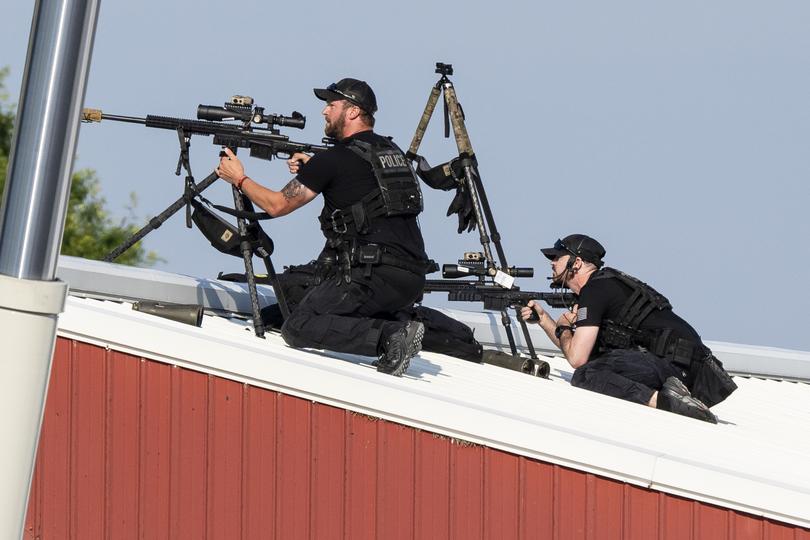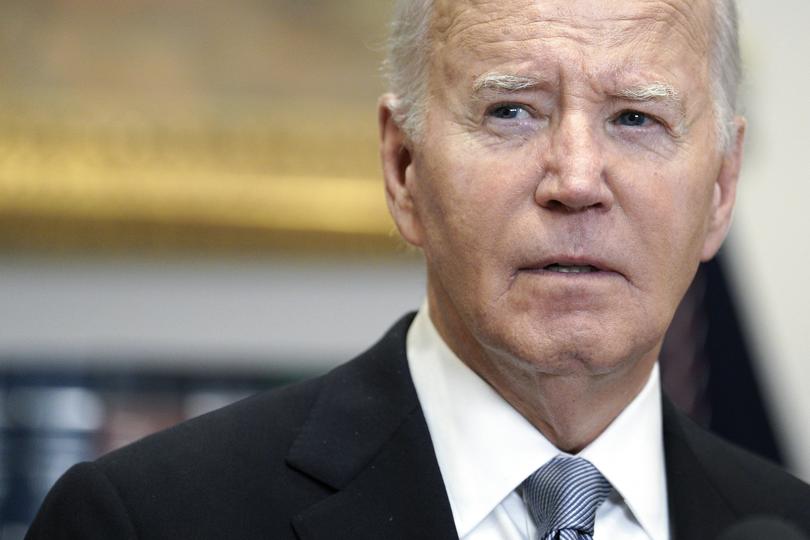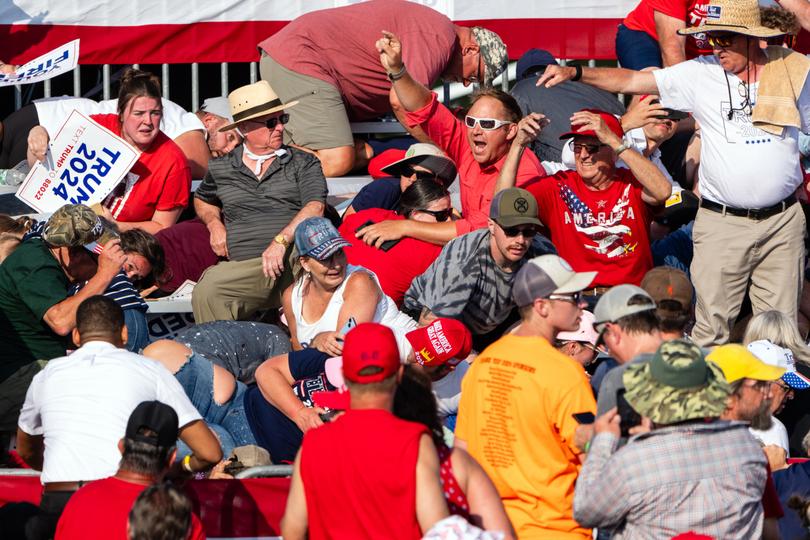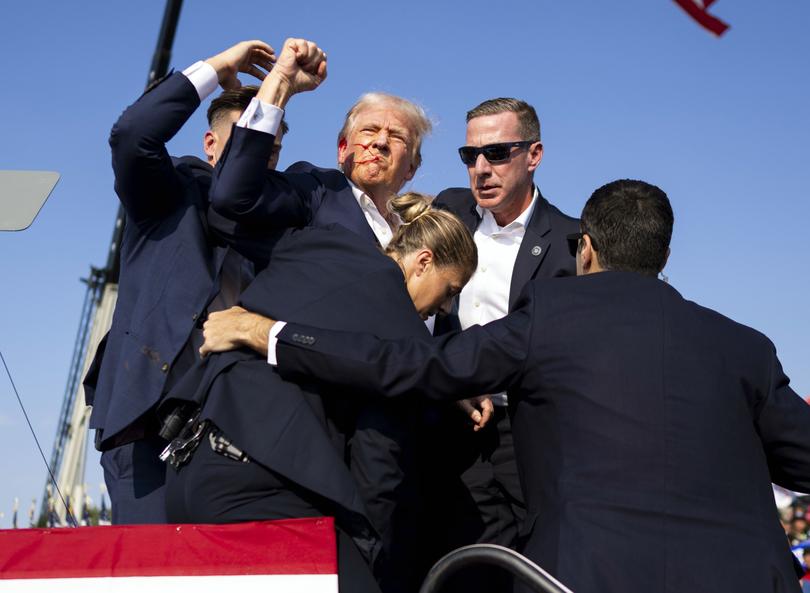Donald Trump’s assassination attempt seems likely to tear America further apart
When President Ronald Reagan was shot by an attention-seeking drifter in 1981, the country united behind its injured leader. The teary-eyed Democratic speaker of the House, Tip O’Neill, went to the hospital room of the Republican president, held his hands, kissed his head and got on his knees to pray for him.
But the assassination attempt against former President Donald Trump seems more likely to tear America further apart than to bring it together. Within minutes of the shooting, the air was filled with anger, bitterness, suspicion and recrimination. Fingers were pointed, conspiracy theories advanced and a country bristling with animosity fractured even more.
The fact that the shooting in Butler, Pennsylvania, on Saturday night was two days before Republicans were set to gather in Milwaukee for their nominating convention invariably put the event in a partisan context. While Democrats bemoaned political violence, which they have long faulted Trump for encouraging, Republicans instantly blamed President Joe Biden and his allies for the attack, which they argued stemmed from incendiary language labeling the former president a proto-fascist who would destroy democracy.
Sign up to The Nightly's newsletters.
Get the first look at the digital newspaper, curated daily stories and breaking headlines delivered to your inbox.
By continuing you agree to our Terms and Privacy Policy.Trump’s eldest son, his campaign strategist and a running mate finalist all attacked the political left within hours of the shooting even before the gunman was identified or his motive determined. “Well of course they tried to keep him off the ballot, they tried to put him in jail and now you see this,” wrote Chris LaCivita, a senior adviser to the former president.
But the Trump campaign seemed to think better of it, and the post was deleted. A memo sent out Sunday by LaCivita and Susie Wiles, another senior adviser, instructed Trump team members not to comment on the shooting.
Either way, the episode could fuel Trump’s narrative about being the victim of persecution by Democrats. Impeached, indicted, sued and convicted, Trump even before Saturday had accused Democrats of seeking to have him shot by FBI agents or even executed for crimes that do not carry the death penalty.
After being wounded at the rally, Trump, with blood staining his face, pumped his fist at the crowd and shouted, “Fight! Fight! Fight!”
What exactly drove the gunman, who was quickly killed by Secret Service counter snipers, remained a matter of speculation. Identified as Thomas Matthew Crooks, 20, from Bethel Park, Pennsylvania, he was a registered Republican but had also given $15 to a progressive group on Biden’s Inauguration Day, more than three years ago. Authorities said they were still investigating his motive.
The shooting came at a time when the United States was deeply polarized along ideological, cultural and partisan lines — split, it often seems, into two countries, even two realities. More than at any time in generations, Americans do not see themselves in a collective enterprise but perceive themselves on opposite sides of modern ramparts.
The divisions have grown so stark that a Marist poll in May found that 47% of Americans considered a second civil war likely or very likely in their lifetime, a notion that prompted Hollywood to release a movie imagining what that could look like.

The propulsive crescendo of disruptive events lately has led many to compare 2024 to 1968, a year of racial strife, riots in cities and the assassinations of the Rev. Martin Luther King Jr. and Robert F. Kennedy. Protests over the Vietnam War helped prompt President Lyndon B. Johnson to drop out of his race for reelection that year.
Until now, there had been one important difference. “Of all the similarities between 1968 and 2024, the lack of political violence this year has been one of the key areas where the years diverge,” said Luke A. Nichter, a historian at Chapman University and author of “The Year That Broke Politics,” a history of 1968. “That is no more.”
Michael Kazin, a historian at Georgetown University, said political violence had a long history in America. “As in 1968 — or 1919 or 1886 or 1861 — the violence that just occurred is rather inevitable in a society as bitterly divided as ours,” he said. “And of course there’s actually less violence in politics now than there was in those other years.”
Yet not since President Abraham Lincoln was shot by a Confederate sympathizer at Ford’s Theater has an assassination attempt against a president or major presidential candidate so sharply exacerbated the partisan divide.

Presidents James A. Garfield, William McKinley and John F. Kennedy were shot to death by lone gunmen who were upset with them for one reason or another, but the killings did not become sources of schism between the Republican and Democratic parties. The same was true with King and Robert Kennedy’s assassinations, as well as shootings that missed President-elect Franklin D. Roosevelt and President Gerald R. Ford.
Gov. George C. Wallace, D-Ala., was shot at a campaign event during his 1972 presidential run by a man who wanted to be famous. The attack left the segregationist governor paralyzed but eventually contributed to his evolution and disavowal of past racism. John Hinckley attacked Reagan out of an obsession to impress movie star Jodie Foster.
In recent years, political violence in America at levels below the presidency has become increasingly partisan. Rep. Gabrielle Giffords, D-Ariz., was critically wounded in a mass shooting in 2011, prompting angry criticism of Republicans for fomenting hate. Rep. Steve Scalise, R-La., now House majority leader, was shot and injured during a congressional baseball game practice in 2017 by a supporter of Sen. Bernie Sanders, I-Vt.
An armed man who was arrested outside the home of Justice Brett Kavanaugh in 2022 told authorities that he wanted to kill the conservative Supreme Court justice because of his positions against abortion and gun control. Later that year, a man wielding a hammer broke into the San Francisco house of then House Speaker Nancy Pelosi, D-Calif., and beat her husband, Paul Pelosi.

The most famous recent case of political violence before this weekend was the attack on the Capitol on Jan. 6, 2021, by supporters of Trump trying to block the certification of Biden’s election victory. Capitol Police investigated 8,008 cases of threats involving members of Congress last year. While most of them were not serious, it was the second-highest total in the department’s history and has prompted the hiring of more prosecutors.
Many of these recent cases have led to not so much soul-searching as blame-setting. After Giffords was shot, Democrats assailed Sarah Palin, a former Republican vice-presidential candidate, because Giffords’ district had been among 20 singled out underneath digitized crosshairs on a map circulated by Palin’s political action committee, although there was no evidence the gunman knew about or was driven by the map.
House Democrats impeached Trump for instigating the Capitol attack with his inflammatory language at a rally beforehand. The former president has a long history of encouraging violence. He urged supporters to beat up protesters at rallies, cheered a Republican member of Congress for body-slamming a reporter, called for looters and shoplifters to be shot, made light of the attack on Paul Pelosi and promised pardons to Jan. 6 rioters. When some of his supporters chanted “Hang Mike Pence!” on Jan. 6, Trump told aides that maybe the vice president deserved it because he had defied efforts to overturn the 2020 election.

Republicans turned the tables on Democrats this weekend, arguing that if Trump was responsible for provocative rhetoric, then Biden should be as well. Speaking with donors Monday, Biden said he wanted to stop talking about his poor debate performance and instead “put Trump in a bull’s-eye.” He described his strategy as “attack, attack, attack.”
“The central premise of the Biden campaign is that President Donald Trump is an authoritarian fascist who must be stopped at all costs,” Sen. JD Vance, R-Ohio, a front-runner to be named Trump’s running mate, wrote on social media two hours after the attack Saturday. “That rhetoric directly led to President Trump’s attempted assassination.”
Scalise, also the victim of a political attack, agreed. “For weeks, Democrat leaders have been fueling ludicrous hysteria that Donald Trump winning reelection would be the end of democracy in America,” he said. “Clearly, we’ve seen far-left lunatics act on violent rhetoric in the past. This incendiary rhetoric must stop.”
Rep. Mike Collins, R-Ga., wrote on social media that “Joe Biden sent the orders” and urged the local prosecutor to “immediately file charges against Joseph R. Biden for inciting an assassination.” But not all hands are clean. Collins once ran a campaign ad in which he fired a rifle at Nancy Pelosi’s agenda and shot a cardboard cutout of so-called RINO Republicans.
Some Republican leaders took a more measured approach. Speaker Mike Johnson, R-La., speaking on “Today” on NBC, said Sunday that Trump had “been so vilified and really persecuted by media, Hollywood elites, political figures, even the legal system” and cited Biden’s “bull’s-eye” comment.
“I know he didn’t mean what is being implied there, but that kind of language on either side should be called out,” Johnson said. But he emphasized that “both sides” have “got to turn the temperature down in this country.”
Biden did not directly respond to criticism of his language during three televised appearances since the shooting, but he flatly condemned the attack and called Trump to wish him well. Like Johnson, he said that Americans must “lower the temperature” and that “it’s time to cool it down.” During a rare Oval Office address, he added: “Politics must never be a literal battlefield, and God forbid a killing field.”
The danger is if political violence becomes normalized, just another form of the endless partisan wars. A study published in May found that 11% of Americans said violence was sometimes or always justified to return Trump to the presidency, and 21% said it was justified to advance an important political objective.
But Garen J. Wintemute, director of the Violence Prevention Program at the University of California, Davis, and the lead author of the study, said it was important to remember that most Americans still rejected political violence.
“It’s the job of that majority to make their views known, over and over again, and as publicly as possible,” Wintemute said. “A climate of intolerance for violence reduces the chance that violence will occur. The question before us as a nation is, ‘Will violence become part of American politics?’ Each of us as an individual needs to answer that question, ‘Not if I can help it.’”
This article originally appeared in The New York Times.
© 2024 The New York Times Company
Originally published on The New York Times
